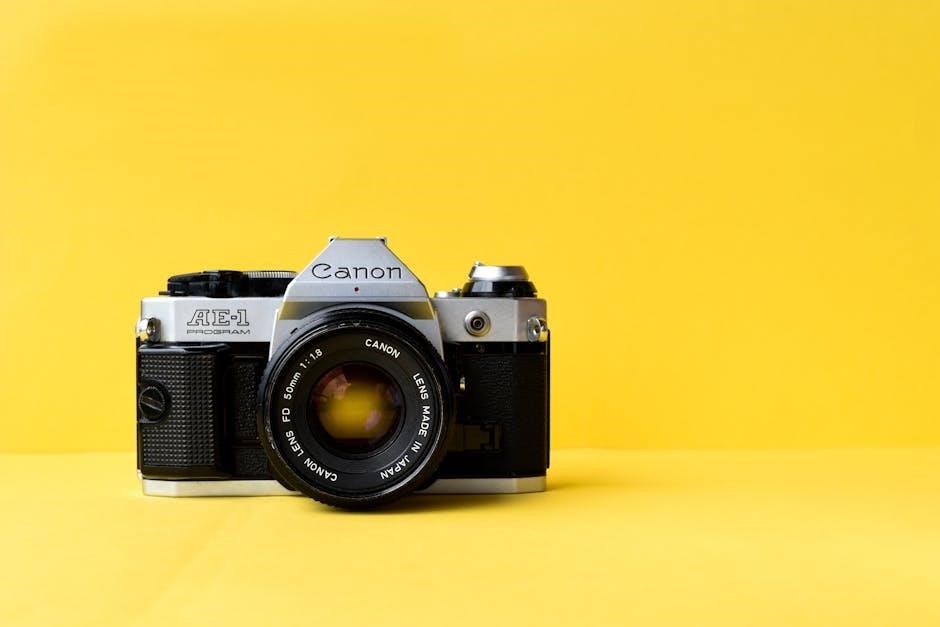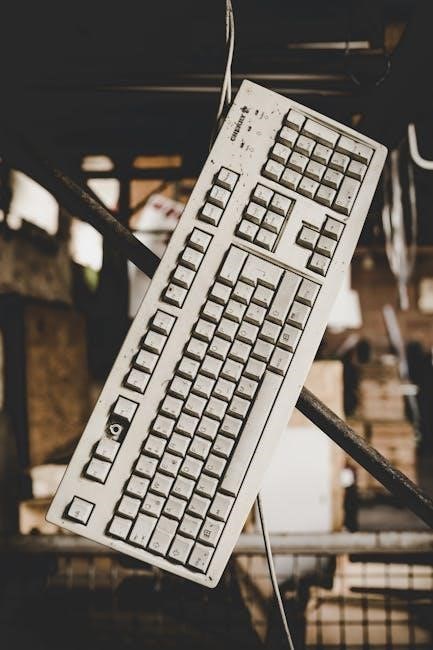
brother lock 1034d user manual
Brother 1034D User Manual: A Comprehensive Guide
Welcome! This comprehensive guide unlocks the full potential of your Brother 1034D serger. This user manual will take you from basic setup to advanced techniques. Master threading, tension adjustments, and troubleshooting for optimal stitch quality. Explore features and accessories, ensuring professional results every time;
Overview of the Brother 1034D Serger

The Brother 1034D serger is a popular and versatile sewing machine designed for both beginners and experienced sewers. Known for its reliability and user-friendly design, it’s an excellent addition to any sewing room. This machine excels at finishing edges, hems, and creating decorative effects on a wide variety of fabrics, including formal wear, linens, and stretchy materials.
The 1034D is capable of sewing with 3 or 4 threads, offering various stitch options like overlock stitching, which prevents fabric fraying. Its differential feed system ensures even sewing on different fabric types.
With a sewing speed of up to 1,300 stitches per minute, it allows for quick and efficient project completion. Adjustable stitch width and length provide flexibility in your sewing projects. The machine includes a detachable trim trap to keep your workspace tidy and a foot controller for ease of use. A built-in storage compartment keeps accessories organized.
The Brother 1034D’s durable construction ensures long-lasting performance, making it a reliable choice for all your serging needs. Its compact and lightweight design simplifies transportation and storage.
Key Features and Stitch Options
The Brother 1034D Serger boasts an array of features designed to enhance your sewing experience and provide professional-quality results. A standout is its versatile stitch options, including 4-thread overlock, 3-thread overlock, narrow hem, rolled hem, and ribbon lock stitches. These options cater to various fabric types and project requirements, allowing for creative flexibility.
The differential fabric feed system is crucial for achieving even stitches, preventing puckering or stretching, especially on delicate or stretchy materials. This feature ensures a smooth, professional finish on all your projects.
Color-coded threading guides simplify the threading process, making it easy even for beginners. The lay-in threading system further streamlines setup, saving time and reducing frustration. The machine’s high sewing speed, reaching up to 1,300 stitches per minute, enables quick and efficient sewing.
Additionally, the included snap-on presser feet enhance versatility, allowing for specialized techniques. The free arm capability facilitates sewing cuffs and sleeves effortlessly, while the adjustable stitch width and length provide customization options for every project. These features collectively make the Brother 1034D a powerful tool for any sewing enthusiast.
Threading the Brother 1034D: A Step-by-Step Guide
Threading the Brother 1034D serger can seem daunting, but following a systematic approach simplifies the process. Begin by raising the presser foot and ensuring the machine is turned off for safety. Locate the color-coded threading guide, which indicates the correct path for each thread.
Start with the lower looper, guiding the thread through its designated path, paying close attention to the tension discs. Next, thread the upper looper, again following the color-coded markings and ensuring proper seating in the tension dial. Finally, thread each needle, making sure the thread passes through the eye from front to back.
After threading each component, gently pull the threads to confirm they move freely. If encountering resistance, retrace your steps to identify any missed guides or incorrectly seated threads. Once all threads are correctly in place, test the serger on a scrap fabric to ensure proper stitch formation.
Remember to consult your user manual for detailed diagrams and specific instructions tailored to your machine model. With practice, threading the Brother 1034D becomes a straightforward task, enabling you to unleash its full potential.
Understanding Tension Settings for Optimal Stitch Quality

Achieving perfect stitches with the Brother 1034D relies heavily on understanding and adjusting thread tension. Tension refers to the amount of pull exerted on each thread as it forms a stitch. Balanced tension is crucial for a strong, even seam where the threads interlock correctly within the fabric.
Uneven tension can lead to several problems. If the needle thread is too tight, the seam might pucker. Conversely, a loose needle thread results in loopy stitches on the fabric’s underside. Similarly, imbalances in the looper threads cause skipped stitches or distorted seam edges.
To adjust tension, use the dials located on the front of the machine. Each dial controls the tension for a specific thread path. Start with the default settings recommended in the user manual and make small adjustments as needed, testing on scrap fabric after each change.
When troubleshooting tension issues, consider the fabric type and thread weight. Heavier fabrics and thicker threads may require looser tensions, while lightweight materials benefit from tighter settings. Keep a record of successful tension settings for various fabric and thread combinations to streamline future projects.
Troubleshooting Common Problems: A Practical Guide
Even with careful use, the Brother 1034D may occasionally encounter issues. This guide provides practical solutions to common problems, helping you quickly resume your sewing projects.
Thread Breakage: This often stems from incorrect threading or improper tension. Ensure the machine is threaded correctly, following the color-coded guide. Check the tension dials and adjust as needed. Also, verify the needle is the correct type and size for the fabric.

Skipped Stitches: Skipped stitches can result from a bent or damaged needle. Replace the needle and re-thread the machine. Check that the fabric is feeding smoothly and the presser foot is properly engaged.
Uneven Stitches: This usually indicates tension imbalances. Fine-tune the tension dials, testing on scrap fabric. Also, ensure the differential feed setting is appropriate for the fabric type to prevent puckering or stretching.
Machine Jamming: If the machine jams, turn it off immediately. Carefully remove the fabric and inspect for tangled threads or debris. Clean the looper area and re-thread the machine.

Consult the complete user manual for detailed diagrams and instructions.
Needle Selection and Replacement
Choosing the correct needle is crucial for achieving optimal stitch quality and preventing damage to your Brother 1034D serger. The type and size of the needle should be carefully matched to the fabric being sewn.
Needle Types: Universal needles are suitable for many fabrics, while ballpoint needles are designed for knits to prevent skipped stitches. For heavier fabrics, use jeans or denim needles. Always refer to the fabric manufacturer’s recommendations.
Needle Sizes: Needle sizes are indicated by a number, with lower numbers indicating finer needles and higher numbers indicating heavier needles. Finer fabrics require smaller needles, while thicker fabrics require larger needles.
Replacement Procedure: To replace a needle, first turn off the machine and unplug it. Use a screwdriver to loosen the needle clamp screw. Gently remove the old needle. Insert the new needle with the flat side facing the back, pushing it up as far as it will go. Securely tighten the needle clamp screw.
Regularly inspect your needles for signs of damage, such as bending or dullness, and replace them as needed to maintain optimal performance.
Maintenance and Cleaning Tips
Proper maintenance and cleaning are essential for ensuring the longevity and optimal performance of your Brother 1034D serger. Regular cleaning prevents lint and debris buildup, which can interfere with the machine’s mechanics and stitch quality.
Daily Maintenance: After each use, remove any lint or thread scraps from around the needle plate, feed dogs, and loopers using a small brush or lint brush. This prevents accumulation and ensures smooth operation.
Weekly Cleaning: Once a week, or more frequently if you use the machine heavily, perform a more thorough cleaning. Unplug the machine and use a soft brush to remove lint from all accessible areas, including the tension discs, thread guides, and inside the looper compartment.
Lubrication: Periodically lubricate the moving parts of your serger with sewing machine oil. Consult your user manual for specific lubrication points. Avoid over-oiling, as this can attract more lint and debris.
Professional Servicing: Schedule professional servicing for your serger at least once a year, or more frequently if you notice any performance issues. A qualified technician can perform a thorough cleaning, lubrication, and adjustment of the machine’s mechanics.
Available Accessories and Optional Feet
The Brother 1034D serger comes with a variety of standard accessories to get you started. To enhance its versatility, a range of optional accessories and presser feet are available.
Standard Accessories: These typically include a standard presser foot, tweezers, a cleaning brush, a needle set, a screwdriver, and a thread net. These are essential for basic serging tasks.
Blind Stitch Foot: This foot is used for creating invisible hems on various fabrics. It guides the fabric and creates a neat, professional finish.
Gathering Foot: The gathering foot allows you to create ruffles and gathers quickly and easily. It evenly distributes the fabric for a professional look.
Piping Foot: This foot is designed for attaching piping to edges and seams. It ensures that the piping is evenly placed and securely sewn.
Elastic Foot: The elastic foot allows you to sew elastic onto fabric, creating a neat and secure finish. It is ideal for lingerie, swimwear, and sportswear.
Beading Foot: This foot is used for attaching beads and sequins to fabric. It ensures that the beads are evenly spaced and securely sewn.
Downloading the User Manual in PDF Format
Accessing the user manual for your Brother 1034D serger in PDF format is a convenient way to have all the information you need at your fingertips; The PDF manual allows you to view, search, and print the manual from your computer or mobile device.
Official Brother Website: The primary source for the user manual is the official Brother website. Navigate to the support section and search for the Brother 1034D model. You should find a link to download the manual in PDF format.
Brother Support Pages: These pages often contain downloadable resources, including the user manual, troubleshooting guides, and FAQs. Look for a “Downloads” or “Manuals” tab.
Third-Party Websites: Some third-party websites that specialize in providing user manuals may also host the Brother 1034D manual. Be cautious when downloading from these sites and ensure they are reputable.
File Size and Format: The PDF manual is usually a relatively small file, making it easy to download and store. You will need a PDF reader, such as Adobe Acrobat Reader, to open and view the file.
Where to Find Support and FAQs
When encountering issues or needing assistance with your Brother 1034D serger, several resources are available to provide support and answers to frequently asked questions. Knowing where to find these resources can save time and frustration.
Official Brother Website: The official Brother website is the primary source for support. Look for a “Support” or “Help” section, where you can find FAQs, troubleshooting guides, and contact information. Many official websites provide direct contact, email or phone support.
Online Forums and Communities: Online sewing forums and communities are great places to ask questions and get advice from other Brother 1034D users.
YouTube Tutorials: Many helpful video tutorials demonstrate how to use the Brother 1034D and troubleshoot common problems. These videos can be a valuable resource for visual learners.
Authorized Brother Dealers: Local authorized Brother dealers can provide in-person support and service for your serger.
Social Media Groups: Platforms like Facebook often have dedicated groups for Brother sewing machine users.